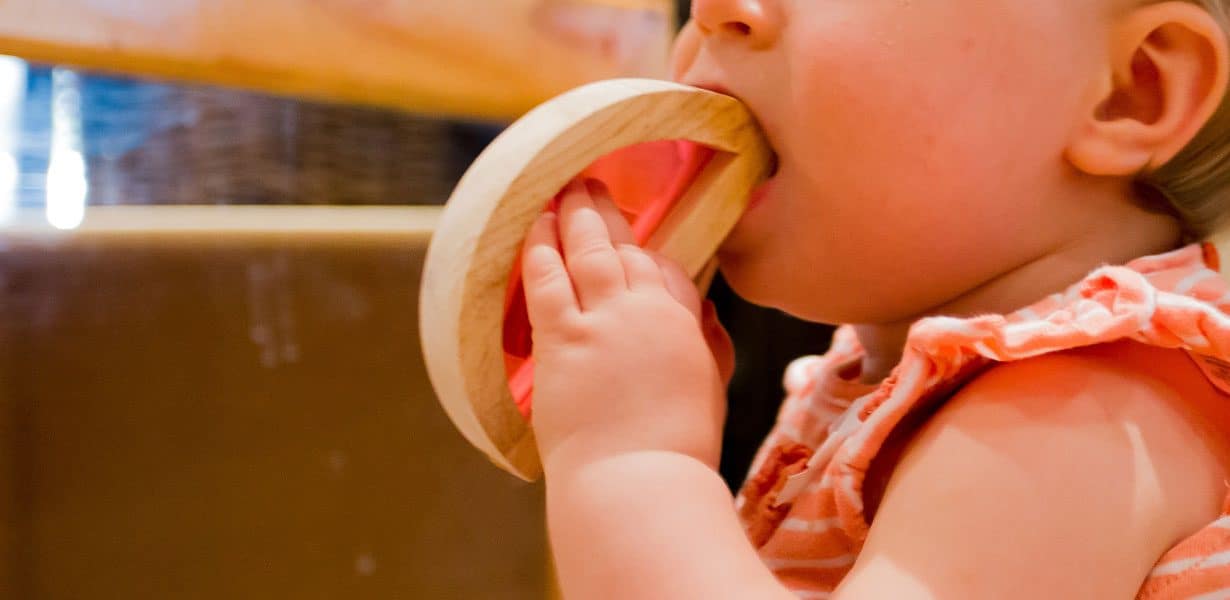Why Children Bite (and What to do About it)

Our NSW Curriculum Mentor, Priscilla Carmichael and our NSW General Manager, Monique Beange, are no strangers to children biting. Testing themselves in a social context, these tots push and pull, working out how to ‘be’ themselves and how they fit into the world.
“Children’s development involves learning to see another person’s perspective, self-regulation, delayed gratification, social norms, consequences, negotiating and problem-solving,” Priscilla says. “At the same time, children are learning how to verbalise their thoughts, needs and wants, as well as physically interact with the world using their senses.”
What makes this interesting in a social setting is that not all children develop at the same rate. Hitting and biting is totally ‘normal’ behaviour as they seek to have their needs met. Instead of viewing the child’s actions as ‘bad,’ ask yourself what they’re trying to tell you through their behaviour.
“It’s our job to work out what’s happening for the child and support them in expressing themselves in a way that doesn’t impinge on the rights of other children,” says Priscilla.
If a child feels scared, threatened or is in an emotionally charged situation but doesn’t have the words to express themselves, hitting or biting is an impulsive reaction and a way to ask an adult for help. “If a child has difficulty seeing another person’s point of view, they may bite another child to get the toy back and if their strategy works, they may use it again,” says Priscilla.
Our Protocol
At Guardian, we support children to develop in ways that allow their needs to be met without biting. First of all, we like to remind families that children biting is common. We then garner their knowledge about their child and work with them to find a solution. It’s important to stay calm during an incident, making it clear that the behaviour is unacceptable, without ‘overreacting.’
“Children are very intelligent and pick up on the attention given to them as a result of their behaviour,” says Priscilla. “Notice the good things your child does and be explicit with your praise and be and be clear about acceptable ways they could deal with emotions.”
“In order to stop a negative behaviour, it’s important to teach a positive new behaviour to replace it, otherwise, the child will fall back into the behaviour that received the attention,” says Monique Beange.
Response and Training
We observe the child in order to understand when and why these behaviours might be happening and then talk with the family to establish how the child is going, what struggles they’re having at home, as well as what strategies they’ve tried.
Communicating with colleagues, we analyse patterns in behaviour such as times of day and particular children or environments where the behaviour occurs. We also look at what else might be affecting the child, such as sensory-processing issues, family context and socialisation.
‘To ensure consistency, we plan with the family about how to deal with the behaviour, both at home and at the centre,” Priscilla says. “We then prevent the behaviour by being aware of triggers and make sure we’re close enough to intervene if necessary.”
Making sure the child is being engaged and interacting in a meaningful way, supporting them to express their emotions and develop language skills, encouraging conflict resolution and problem-solving in social situations can build better ways to communicate.
Working Together
Our educators and families work together to give the children consistent messages and behaviour from the significant adults in their lives.
“Ideally, educators have already established respectful relationships with families in order to support children,” says Priscilla. “We don’t view children struggling in these areas as being ‘bad’ because the responsibility is actually on us to understand what’s causing the behaviour.”
The Follow Up
Sometimes behaviours can take much longer than a few weeks to change. This is one of the reasons we focus on preventing the behaviour from occurring, rather than putting all the responsibility on a child to be ‘fixed’.
“These actions occur due to a complex intersection of many factors and these may not be able to be changed in a matter of weeks,” says Priscilla. “Our long-term plan is to provide consistent, loving guidance for children while actively observing and understanding what’s going on in their world. We check-in regularly with families to find out if the plan needs to be altered in any way.”
We always work with you to put your children first.
Looking for the right Childcare Centre for your Family?
Submit your details and a member of our Concierge Team will be in touch to discuss what you need and how we can help you experience something more than childcare.
We'll be in touch soon.






